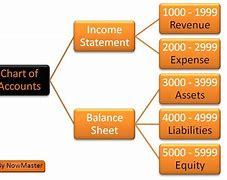
The preparation of financial statements often encounters difficulties in recording transactions because the transactions are carried out in a complex manner. If existing problems cannot be resolved, financial statements can be a protracted problem. This issue forces all entrepreneurs to start using the Chart of Accounts (COA) process.
What is COA?
A chart of accounts (COA) is simply a list of accounts in a business that allows for more concise and convenient bookkeeping. In addition, COA saves time because each account already has a code that differentiates it from other accounts based on their financial needs.
Learn more about the in-depth understanding, benefits, and types of charts of accounts in the following sections.
Chart of Accounts (COA)
A chart of accounts (COA) lists systematic sets of codes to organize a particular structure. The COA contains the account name and the elements of the account code.
Using account charts, a business can create or modify its account plans. Typically, an account table includes a number symbol to show the difference between account types.
In addition, the chart of accounts is often used to display financial statements, such as balance sheets and income statements. Then various other accounts, such as stocks or shares, debts, liability expenses, and other expenses, can also be added to charts of accounts as requested by the business.
Benefits of the chart of accounts (COA)
Here are the advantages of creating a chart of accounts:
Able to help prepare reports
Help improve various data or other records that have changed due to user errors or additional transactions.
Many data or records will be easier to manage, compare, and analyze, which decision-makers can use.
Provide more results from records or data obtained by the company, and the process will be more controlled.
Simplify the reading of reports so that stakeholders can make the right decisions at the right time.
Types of chart of accounts (COA)
The chart of accounts (COA) is a series of codes made up of letters and numbers. It can also be a systematic and easy-to-understand combination of numbers and letters for stakeholders. Name and account codes are used to group, record, report, and control financial transactions within a business.
There are three account codes: numeric account codes, alphabetical account codes, and alphabetical and numeric alloy codes. See the description of each type of COA, among others:
Numbers (Numeric)
Numbers are the most common symbols used to create account codes on account plans.
Example:
001: A lot of money
002: Small Change
003: Receivable
Letters (alphabet)
Financial statements rarely use characters with letter symbols when creating charts or account codes. In general, it is more common to use letters to indicate the name of the company, the name of the customer, the name of the bank, the name of the supplier, and the name of the region.
Even so, doing COA can still use letters.
Example:
HC: Huge Cash
SC: Small Cash
TR: Trade Receivables
Number and Letters
When letter symbols have been used for the prefix name, bank name, supplier name, company name, or customer name, the code still requires an additional division to be clear and easy to understand for all parties involved, a letter and a number symbol can be combined to be beneficial.
Example:
ARA01: Arrears Receivable in Arrears
ARP 01: Account Receivable Paid
CR01: Cash Register
SLC02: Special Large Cash
Classification of Accounts
Understand the classification of accounting account codes (COA), which are divided into:
Balance Sheet Account
• Liabilities
• Stockholders Equity
• Asset
Income Statement Account
Operating costs
Cost of fund
Revenue/sales
Other income and expenses
Conclusion
Once you understand the Chart of Accounts (COA), you can distinguish each account from a company's balance sheet. The preparation of the chart of accounts will have a significant impact on the financial statements.
A description of the benefits you can achieve, such as easier management and comparison between accounts, makes decision-making more accurate. In addition, external parties who read the company's financial statements will more easily understand the contents of the report.
If financial reporting is complex and time-consuming, you can use accounting software. Using a software-based accounting system will make it easier to produce accurate financial statements and visualize actual conditions.
Starting with cash flow management, financial reports, bank reconciliations, journal adjustments, invoices, and more, making financial statements simpler and more automated.
FOR MORE INFORMATION ON HOW TAXES MADE EZ, INC. CAN BEST HELP YOU WITH YOUR TAX FILING NEEDS, PLEASE CLICK THE BLUE TAB ON THIS PAGE.
THANKS FOR VISITING.
